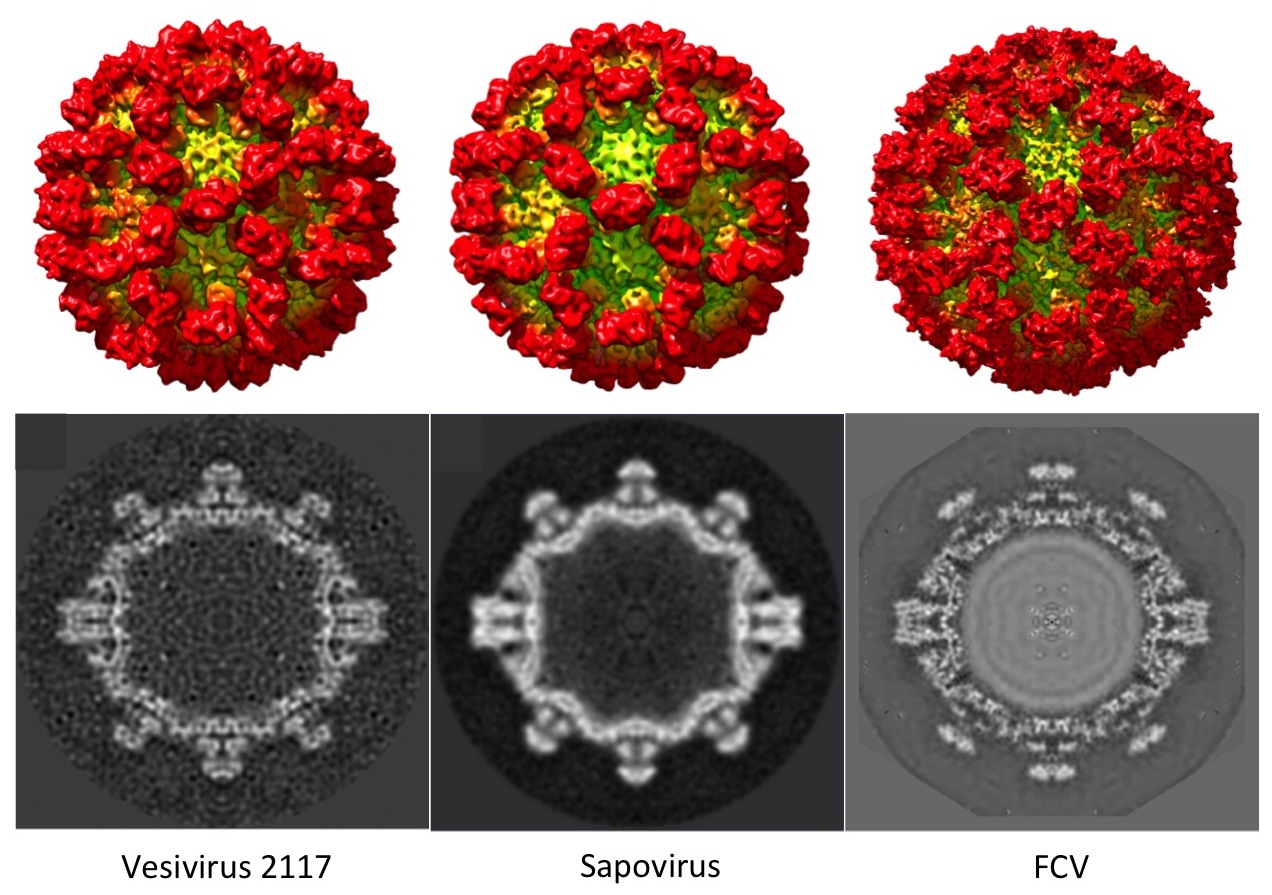Vesivirus 2117 capsids more closely resemble sapovirus and lagovirus particles than other known vesivirus structures
Vesivirus 2117 is a member of the Caliciviridae, a family of small non-enveloped icosahedral viruses encoding a single strand positive-sense RNA genome. It was identified in 2009 as a contaminant of Chinese hamster ovary cells propagated in bioreactors at a pharmaceutical manufacturing plant.
A structure of vesivirus 2117 virus-like particles (VLPs) as well as the other caliciviruses of feline calicivirus and a chimeric sapovirus was investigated by using cryo-electron microscopy and three-dimensional image reconstruction.
A structural comparison of several members of the Caliciviridae shows that the distal P domain of vesivirus 2117 is morphologically distinct from that seen in other known vesivirus structures. Furthermore, at intermediate resolutions, a high level of structural similarity between vesivirus 2117 and Caliciviridae from other genera: sapovirus and rabbit hemorrhagic disease virus, was found.
It was postulated that morphological differences in virion structure seen between vesivirus clades may reflect differences in receptor usage.

Figure 1 Cryo-EM structures of caliciviruses: vesivirus 2117, sapovirus, and FCV. Upper panels: 3D reconstructions. Lower panels: A central slice through the 3D reconstructions.
Collaborative Researchers
Grant S. Hansman (Department of Virology, University Hospital Heidelberg, Germany)
David Taylor, Kazuyoshi Murata (NIPS, Japan)

